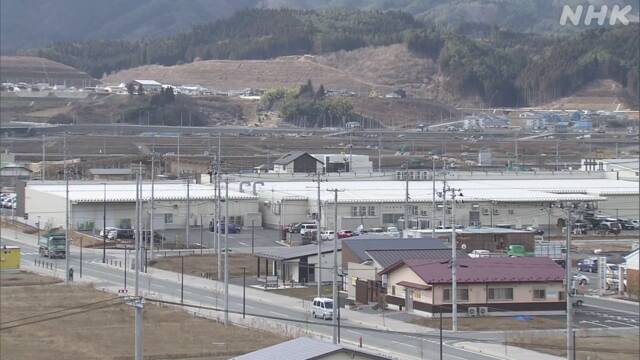Nine and a half years after the Great East Japan Earthquake Rehabilitation of living and reconstruction of the nuclear accident are in the middle of the road September 11, 4:44
k10012611991_202009110449_202009110450.mp4
It has been nine and a half years since the Great East Japan Earthquake and the accident at the Fukushima Daiichi Nuclear Power Station of Tokyo Electric Power Company in 11 days.
Although the reconstruction of the houses damaged by the tsunami has been almost completed, the reconstruction of living conditions and the recovery from the nuclear accident are still in the middle of the road, and we are facing new challenges such as the effects of the new coronavirus.
Nine and a half years ago, on March 11, a huge earthquake of magnitude 9.0 occurred off the coast of Tohoku, and a tsunami with a height of more than 10 meters rushed to the coast.
According to the National Police Agency and the Reconstruction Agency, there are at least 22,166 dead and missing, including "disaster-related deaths."
Reconstruction of housing is progressing, and by the end of July, 29,555 units, which is 99.7% of the plan, were completed in eight prefectures such as Iwate, Miyagi, and Fukushima, and raising work, etc. 99% of the plan was completed for the residential land constructed in.
On the other hand, in a questionnaire conducted by NHK from July to this month to more than 1,400 victims of Iwate and Miyagi, 42% of the respondents answered that their household income decreased due to the earthquake and the nuclear accident. Regeneration is in the middle of the road.
Furthermore, recently, the new coronavirus has hit the food service industry, tourism industry, fishery industry, etc. even in the disaster area, and new challenges are being posed.
On the other hand, evacuation orders due to the nuclear accident still continue in seven municipalities, Minamisoma City, Namie Town, Futaba Town, Okuma Town, Tomioka Town, Iitate Village, and Katsurao Village in Fukushima Prefecture, totaling 337 square kilometers. , It is designated as a "difficult-to-return area" where access is severely restricted.
Of these, 8% of the areas have been decontaminated by the government and are planned to be decontaminated within 3 years, but the remaining 92% have been decontaminated or decontaminated. Instead, the council formed by the local government that receives the designation of the area has repeatedly asked the country to show a concrete policy.
Some local governments are calling for simultaneous cancellation of the entire area, including areas where decontamination is not performed, and new discussions have begun on how to release the “difficult-to-return area”.

